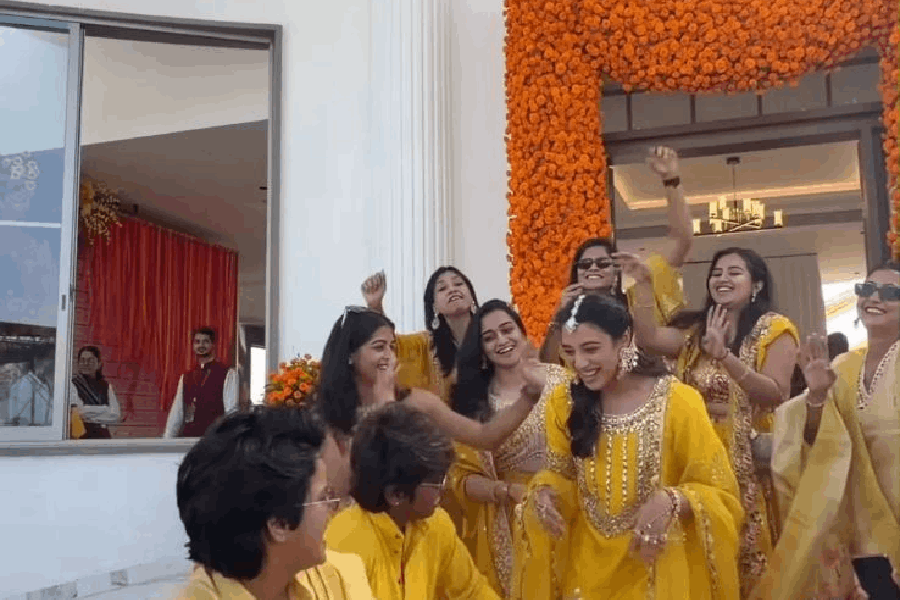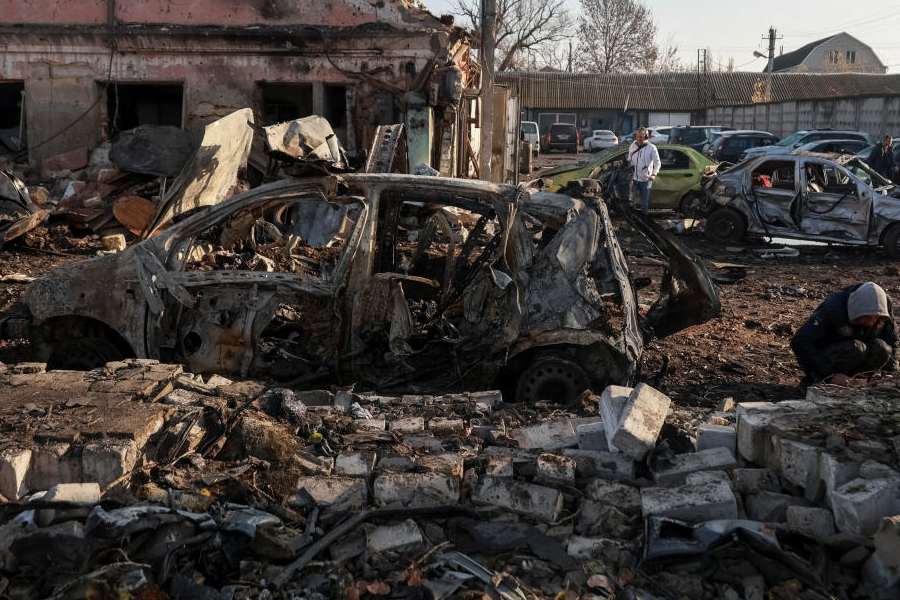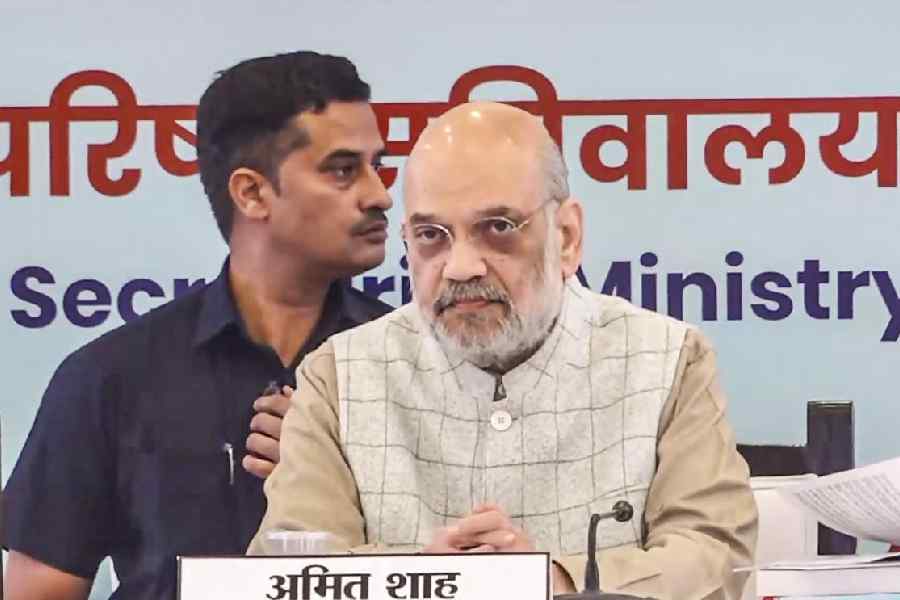Avtar Singh is taking us on a tour of Sant Kutiya Gurdwara on Harish Mukherjee Road. The five marble floors of the gurdwara rise serene and white against a February afternoon, like an island of quiet in fidgety Bhowanipore. Singh leads us into the spacious prayer hall, the Darbar Sahib, on the first floor, and gestures, gently and respectfully, towards the golden canopy in front of us, under which rests the Guru Granth Sahib, the sacred book of the Sikh faith.
It is considered the living, the eternal guru, says Singh, the general secretary of the gurdwara. He is 59. The Guru Granth Sahib contains words and hymns of Sikh gurus, and each copy has 1,430 pages. “The gurdwara is the doorway (dwar) to the guru,” explains Singh.
In Sikhism, God is the Oneness that permeates eternity and entirety. Akal, meaning timeless, is a word integral to Sikh faith and religion. The words of the gurus describe God.
This is Singh’s third term as the general secretary of the gurdwara. But Singh, a lean, brisk man, who was in the transport business earlier, would much rather speak about the gurdwara than about himself. He was born and brought up in Calcutta. He studied at Birla High School and Bhowanipore Education Society. But his life seems to be here, at the gurdwara.
Floor by floor, he takes us through the gurdwara, to the Nishan Sahib on the top, the sword-imprinted flag that proclaims a gurdwara. It is like an ascent, through the idea of Sikhism, its practices and its elaborate symbolism.
It also perhaps gives a glimpse into how faith holds up a mass of people elsewhere in the country, out in the cold, pitted against the powers of the state.
“The Guru Granth Sahib not only contains the hymns of the Sikh gurus, but also that of 13 Hindu Bhakti movement poets, including Jayadeva, who was from this part of the country, and two Sufi Pirs,” he says. The book is written in Gurumukhi script, but in many languages, such as Brajbhasha. The Sikh religion incorporates elements from many religions and the gurdwara is open to visitors from all religions and communities, says Singh. It preaches peace, harmony and tolerance.
The afternoon light has filled the prayer hall. Every day people congregate here to listen to the readings from the Guru Granth Sahib. Men sit on one side of the floor, women on the other. “Everyone sits at the same level. The Sikh religion believes in equality, including that of gender,” says Singh.
The community has dwindled in Calcutta. Once a thriving population that dominated the transport business in the city and also was present in the hotel business, now it has come down to a few thousands. Many among the younger generation have gone abroad. Singh’s three children have left for Canada. Singh, a widower, lives alone.
Fewer people come to the gurdwara now, but the gurdwara, like the other gurdwaras in the city and elsewhere, remains waiting. And keeps the community together. The two floors above the two-level Darbar Sahib are used for langar, the meal served free to any visitor. The floors are strewn with giant pots that are used to cook food on special days. On other days the amount cooked is not huge. Langar is a simple vegetarian meal, meant for the needy and the hungry.
It is a seva, selfless service, a defining feature of Sikhism, says Singh.
In Sikh lore, the practice of langar goes back to the first guru, Guru Nanak, says Singh. Guru Nanak’s father had given him Rs 20 for a business. With that money, Guru Nanak fed the hungry. “It was sachcha sauda (true business),” says Singh.
The practice also conveys the message of equality: everyone eats together, sitting on the floor. It is said that on the suggestion of Guru Amardas, the third Sikh guru, emperor Akbar had langar.
That it has the power to sustain even a movement is evident at the farmers’ protest in Delhi. The kindness of food can go a long way and embrace everyone, including policemen posted at the protest site. “Seva and simran,” says Singh, are the two pillars of Sikhism: service and remembrance of God.
On top of the gurdwara stands the Nishan Sahib, a triangular flag with the composite emblem of the two-edged sword khanda, a chakkar, a circular shape, and two single swords flanking the khanda and the chakkar. On the left is the sword called Piri and on the right is the Miri, representing spiritual and temporal sovereignties.
“It is not right to call the farmers’ protest a Sikh protest,” says Singh. “Because it is a national protest.” But at the same time he cannot not talk about what the Sikhs, or the people from Punjab, have contributed to the nation and brought to the protest. “The Green Revolution happened in Punjab. And we are in the Army too.” How can farmers’ interests not be looked at by the state? There is a proverb that says uttam kheti, madhyam vyapar, nikhad chakri (the best occupation is farming, then comes business and the last is working for someone else),” says Singh.
“The protest will not stop. The Sikhs are a very determined lot,” says Singh.
“What we have to do, we do. Jo bole so nihaal, Sat Sri Akal. One who says the words, feels fulfilled; true is the Timeless Lord. The word and its accomplishment are simultaneous, as are the spiritual and temporal sovereignties.”
But one day, feels Singh, he has to leave Calcutta. When he is old and has to be taken care of, he will leave the city to stay with his children.











